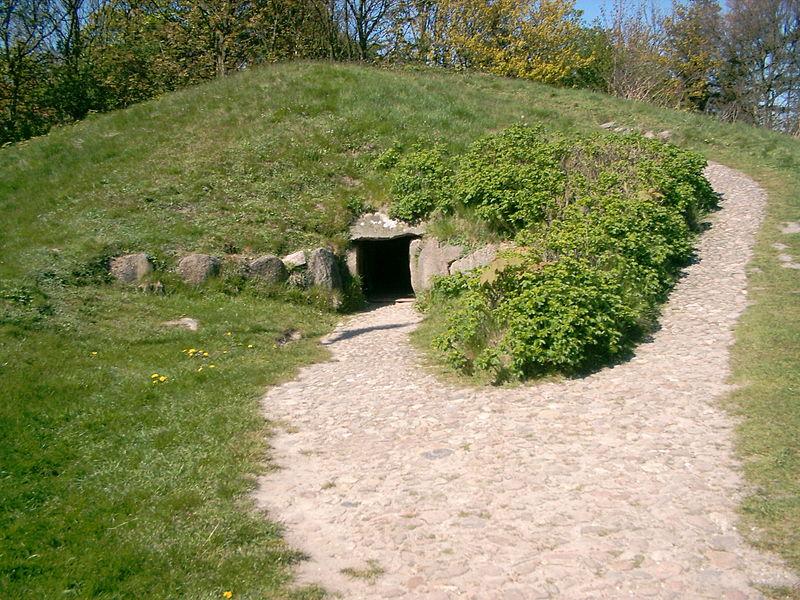Denghoog
Those on holiday in Sylt should not miss the opportunity to see north-western Europe’s largest burial mound in Wenningstedt. It still remains a mystery how it was possible to build this mighty stone grave more than 5000 years ago.
The burial mound is named after a Neolithic period, the Denghoog stage. The word “Denghoog” comes from Söl’ring, the Frisian language spoken on Sylt, and means “Thing Hill”. Public and court assemblies were referred to as “Thing” (þing) in old German law. Such assemblies were always held in the open and frequently on elevated ground. It is also possible that people met here in the past to administer justice. However, the Denghoog was originally built in the 4th century B.C. as a burial site.
The vault used back then as a burial chamber is 3 metres wide, between 1.5 and 1.9 metres high and just under 5 metres long. The chamber is made up of 18 tonnes of heavy Ice Age boulders. The entrance originally led through a small corridor; today visitors reach the tomb from above.
The burial mound is named after a Neolithic period, the Denghoog stage. The word “Denghoog” comes from Söl’ring, the Frisian language spoken on Sylt, and means “Thing Hill”. Public and court assemblies were referred to as “Thing” (þing) in old German law. Such assemblies were always held in the open and frequently on elevated ground. It is also possible that people met here in the past to administer justice. However, the Denghoog was originally built in the 4th century B.C. as a burial site.
The vault used back then as a burial chamber is 3 metres wide, between 1.5 and 1.9 metres high and just under 5 metres long. The chamber is made up of 18 tonnes of heavy Ice Age boulders. The entrance originally led through a small corridor; today visitors reach the tomb from above.
